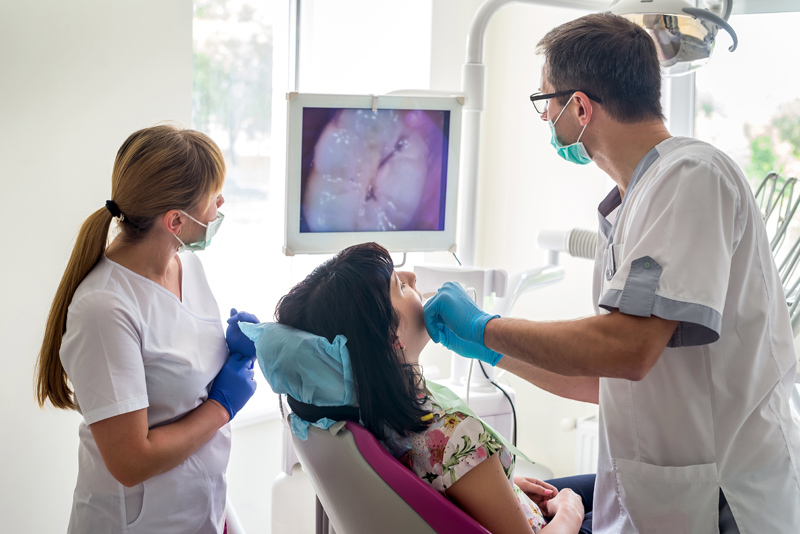Dental cameras have revolutionized the field of dentistry by making procedures more precise and documentation easier. These specialized cameras allow dentists to capture high-quality digital photographs and videos of the patient’s teeth, gums, and oral cavity. Let’s take a deeper look at the history, types, uses and benefits of dental cameras.
History of Dental Photography
The practice of dental photography dates back to the 1840s when the daguerreotype photographic process became available. However, the pictures produced were of low quality and not very practical for dental documentation. In the early 20th century, dental X-ray machines were invented which opened new opportunities for clinical imaging but pictures were still analog. It was only in the 1990s with advances in digital technology that the first true digital dental cameras were developed. These cameras produced high resolution digital photographs and videos that could be easily stored, shared and compared over time. Today, nearly all dentists use advanced digital dental cameras in their practice.
Types of Dental Cameras
There are mainly two types of digital dental cameras used – intraoral cameras and extraoral cameras.
Intraoral cameras are handheld devices that dentists can place inside the patient’s mouth to examine and photograph the teeth, gums, tongue and oral tissues. These cameras have an very small lens at the end of a bendable arm attached to the main camera body. Some advanced intraoral cameras also record high-definition videos.
Extraoral cameras are tabletop devices usually placed on a dental cart or countertop. They are used to take photos of a patient’s full face, smile and bite for documentation and treatment planning purposes. Extraoral cameras have a larger fixed lens and capture wider angle shots from outside the mouth.
Intraoral cameras are more commonly used on a daily basis by dentists due to their compact size and ability to access hard to reach areas inside the oral cavity. However, both types serve important functions in modern dental practices.
Uses of Dental Cameras
Dental Cameras have many clinical, educational and legal uses that have significantly improved dental care and record keeping. Some of the key uses are:
– Documentation of Medical History – Photos captured at regular intervals help track the progress of conditions like gum disease, cavities, braces treatment etc. over long periods of time.
– Treatment Planning – By comparing past and present photos, dentists can make well-informed treatment decisions and discuss options clearly with patients.
– Patient Education – Photos are a great tool to educate patients about their oral health issues and review proposed procedures.
– Referrals – Clear camera images can be referred to specialists or included in referral reports for consultation.
– Dental Forensics – Photos play a role in insurance claims and legal cases by objectively documenting injuries, before/after treatment status etc.
– Dental Research & Education – Valuable for teaching, demonstrating new techniques, publishing clinical case studies and research papers.
– Marketing & Advertising – High-quality smiles and results photos help promote dental practices and specialists services online and offline.
Benefits of Dental Photography
The use of dental cameras brings significant benefits compared to traditional film-based photography or no documentation methods:
– Digital photos can be immediately viewed, annotated, compared and stored digitally without developing prints.
– HD quality close-up shots provide clarity to spot even tiny defects, cracks or changes over time not visible to naked eyes.
– Consistent angle and framing of follow up photos due to camera positioning allows for accurate before/after assessments.
– Ability to instantly show patients their oral issues, proposed treatments and expected outcomes to aid in shared decision making.
– Digital photos occupy negligible storage space and can be indefinitely preserved as part of comprehensive electronic patient records.
– Images can be securely shared with insurance companies, specialists remotely through encrypted email or online portals.
– Serves as objective legal proof of dental status, treatments done and medico-legal documentation in case of disputes or litigation.
Employment Opportunities in Dental Photography
While most dentists operate dental cameras themselves, there is a growing need for dedicated dental photographers and dental imaging specialists. Some areas where photography experts can find jobs include:
– Dental photography/imaging studios serving multiple practices.
– University dental hospitals and research centers.
– Specialty clinics focused on cosmetic or implant dentistry.
– Private specialty practices of orthodontists, prosthodontists and oral surgeons.
– Dental product and equipment companies as clinical photographers.
– Teaching roles to train new dentists in advanced imaging skills.
*Note:
1. Source: Coherent Market Insights, Public sources, Desk research
2. We have leveraged AI tools to mine information and compile it




